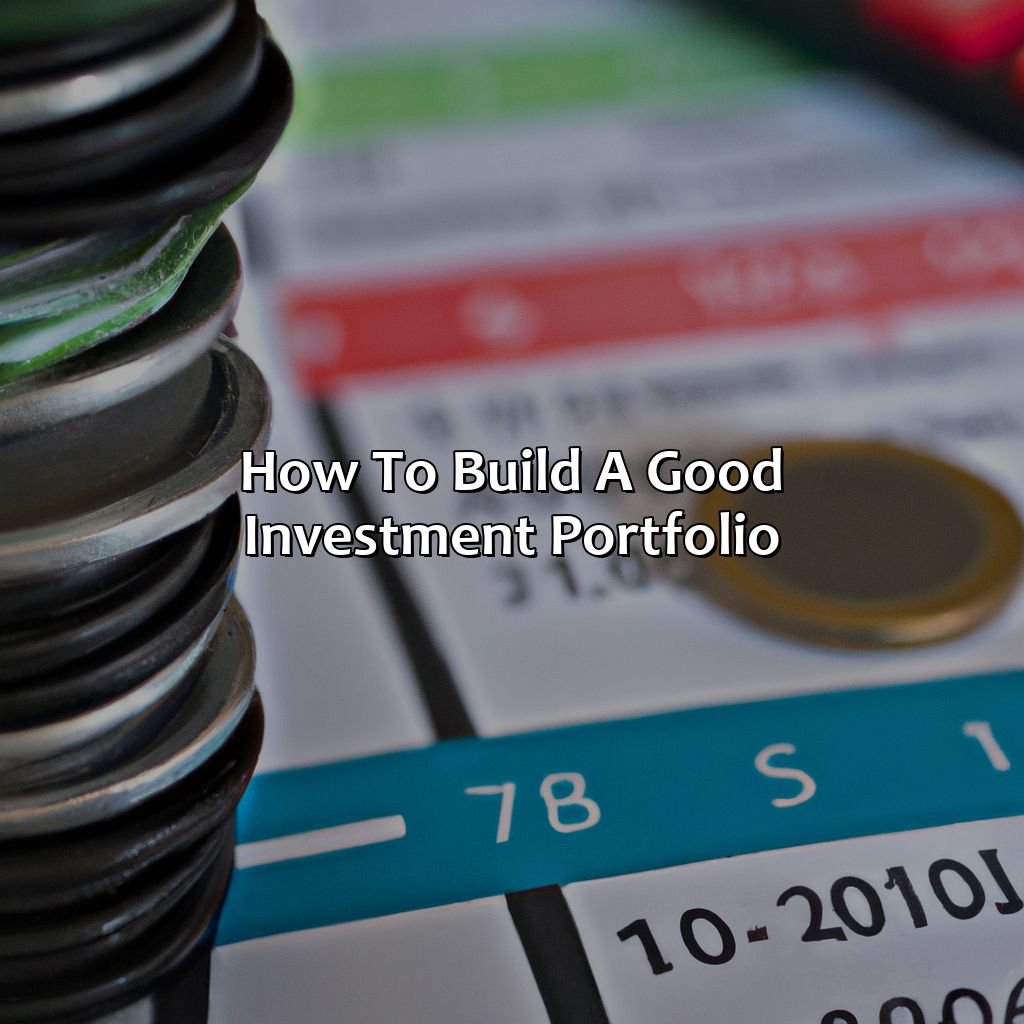How To Build A Good Investment Portfolio?
Key Takeaway:
- Building a good investment portfolio is crucial for achieving long-term financial goals. It helps to maximize returns while minimizing risks, achieving diversification, and balancing volatility. By setting clear investment objectives and choosing a range of investment options, investors can create a portfolio that meets their current and future needs.
- There are different types of investment options available in the market, including stocks, bonds, mutual funds, and real estate. Understanding the risk-return tradeoffs and the potential tax implications of each option is essential to make informed investment decisions.
- To build a good investment portfolio, investors need to apply certain fundamental strategies such as asset allocation, diversification, rebalancing, and risk management. These strategies help investors to achieve a balanced and diversified portfolio, which is key to reducing risk. By investing in multiple sectors, geographic regions, and asset classes, investors can reduce their exposure to any one area and reduce the impact of market volatility.
Are you looking to build a strong investment portfolio? Discover the essential steps and strategies to help you make wise investment decisions and maximize your returns. You have come to the right place!
Importance of Building a Good Investment Portfolio
Assembling a robust investment portfolio is vital for long-term financial stability and growth. Proper diversification helps manage risk and maximizes returns. By selecting a variety of stocks, bonds, and funds, investors spread risk while reducing volatility. Upfront research and portfolio rebalancing ensure growth even during market fluctuations. In today’s volatile economic environment, the importance of building a sound investment portfolio cannot be overstated.
Investors should focus on analyzing asset classes and risk tolerance. An effective portfolio should have both fixed income and equity components, with risk distributed across various industries and geographical regions globally. It is crucial to avoid emotional decisions while making wise investment decisions based on informed analysis.
Investors looking for unique opportunities may consider utilizing a robo-advisor to construct a personalized portfolio based on individual aspirations. As well, keeping track of market trends and updating financial institutional knowledge also serves to strengthen an investment portfolio in the long run.
Pro Tip: Keep an eye on costs while investing as they can impact the bottom line over time. Low-fee index funds, exchange-traded funds, and other similar investment instruments should be used to ensure maximum value.

Image credits: retiregenz.com by Adam Woodhock
Types of Investment Options
You need knowledge for constructing a remarkable investment portfolio with many options. Four key investment choices are: stocks, bonds, mutual funds and real estate. Every selection possesses its own distinct characteristics and advantages. By managing your portfolio with a variety of assets, you can maximize your returns and minimize your risk.
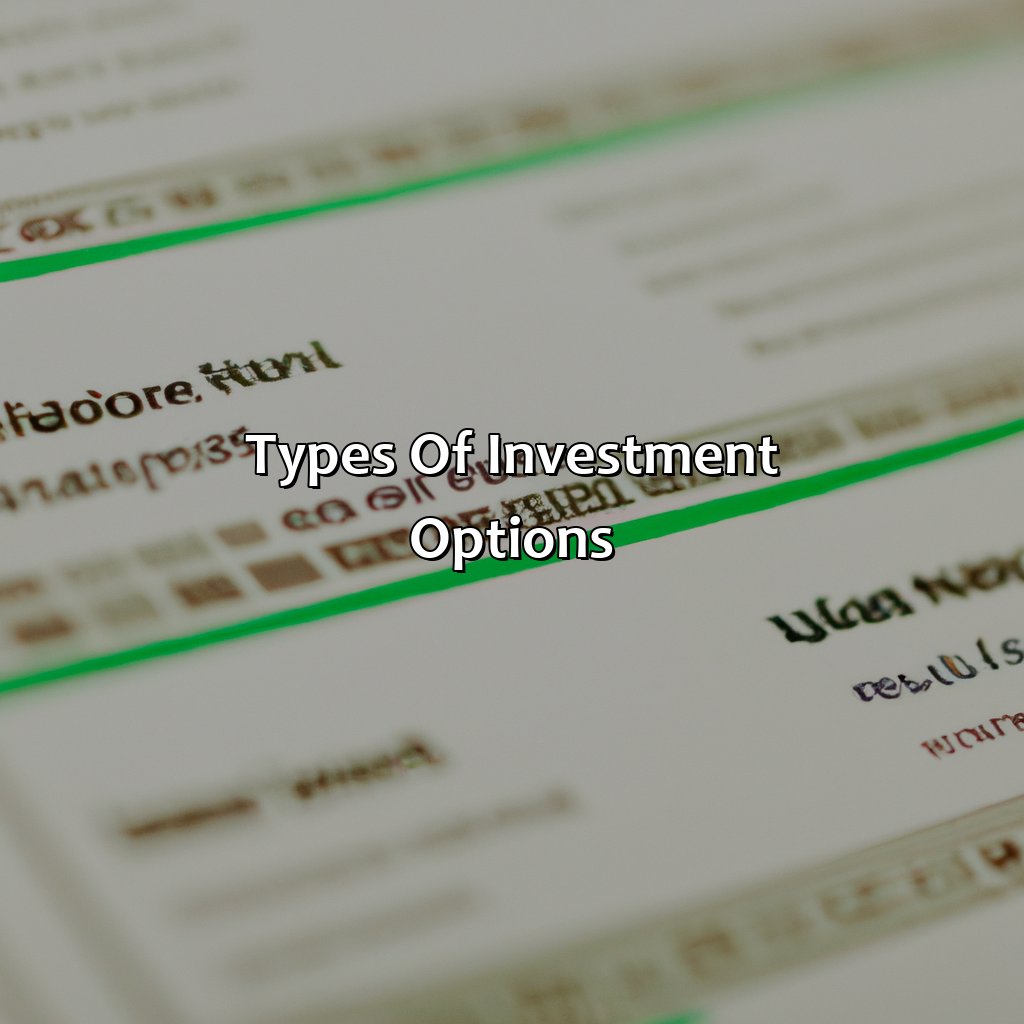
Image credits: retiregenz.com by Joel Washington
Stocks
Investing in equities, or shares of a company, can be an enticing method to increase one’s wealth. A sound knowledge of the stock market and industry trends is essential when considering this type of investment. Stocks offer great earning potential, but it requires diligent research to pick successful companies with strong financials and proven track records. Furthermore, understanding the level of risk involved is crucial as it can determine the level of reward.
Diversifying your stock portfolio by investing in different sectors of the market can reduce risk exposure and enhance gains. Investing in large-cap stocks could yield stable returns over time, while investing in small-cap stocks has higher return potential as they are more sensitive to market fluctuations. Thus, having a prudent mix of both may provide a balanced approach.
It is important to keep oneself updated on current events that affect companies’ operations and markets’ performance to make informed decisions about stock investments. Knowing when to cut your losses or lock in profits is also key.
When Warren Buffet first invested $10 million USD in 1964 into Berkshire Hathaway Inc., he had an effective average cost per share of $13.50 USD per share at year-end. In 2019, its value was $323,400 USD per share – it might not be feasible for everyone to replicate such vast success overnight; however, being knowledgeable about investments may reap long-term rewards.
Nobody likes getting tied down, but investing in bonds might just be the kinky investment your portfolio needs.
Bonds
Fixed-Income Securities
Fixed-income securities or debt securities are financial instruments that generate fixed returns to investors over a specified period. These securities include bonds, treasury bills, and commercial papers issued by institutions or governments as a means of raising capital. Bonds are issued by companies and governments for funding long-term projects. It is a safer alternative to equities and generates reliable returns in the form of interest payments throughout its duration.
Traditionally, bond investments are considered safe havens for those seeking low-risk investments that yield regular income. The government-backed bonds offer less risk than corporate-backed because the former comes with higher credit ratings. Bonds have their own share of risks but generally provide lower yields compared to equities. However, incorporating bonds in an investment portfolio helps balance the risk and return, which increases overall stability.
Pro Tip: While investing in bonds, pay attention to maturity dates, coupon rates, and creditworthiness of issuers. Additionally, factor in inflation rates while assessing fixed income security investments.
Don’t put all your eggs in one basket – unless that basket is a mutual fund, then go ahead and dump ’em all in there.
Mutual Funds
Mutual Funds can be tailored to fit different investment strategies, ranging from conservative to aggressive. They provide access to a diverse range of asset classes and sectors that may not be available for individual investors. Investors can choose from open-ended or closed-ended mutual funds.
It is important to note that not all mutual funds are created equal, which is why it is crucial for investors to research and evaluate each fund’s performance and reputation before investing. Additionally, there are various fees associated with mutual funds such as management fees, administrative expenses, and sales loads that should also be considered.
One notable example of a successful mutual fund is the Vanguard 500 Index Fund. It was first introduced in 1976 and has since grown into one of the largest mutual funds in the world. The fund tracks the performance of the S&P 500 index, providing investors with exposure to some of America’s largest companies. Despite market downturns over the years, the Vanguard 500 Index Fund has consistently provided long-term returns for its investors.
Real estate: because sometimes it’s better to invest in bricks than in stocks.
Real Estate
One of the most popular investment options is the one that involves investing in tangible assets. This class of investments can be broadly categorized as physical assets like property, land, automobiles, and precious metals. Real Estate investments typically involve buying a piece of property with the motive of earning monetary benefits or seeking long term capital appreciation through rental income.
Real Estate investors typically benefit from holding land or buildings in rapidly developing areas that have high potential for future marketability. These types of properties are generally those that attract high demand and appreciate in value quickly. Investors may choose to rent out such properties while waiting for an opportune time to sell them at a profit.
Investing in real estate involves a high degree of knowledge about market trends and long-term planning. Not only does it require initial capital investment, but it also requires ongoing research, legal work, and coordination with other stakeholders like tenants, builders, agents, and brokers.
A successful example of real estate investing is Donald Trump’s Empire State building. After buying the distressed building at a bargain price amidst financial crisis in 1995, he turned it into a highly profitable asset by implementing operational efficiencies and attracting top tenants which raised its overall worth by $320 million by 2002.
Building a good investment portfolio is like building a burrito – you need the right ingredients in the right proportions to make it a satisfying experience.
Strategies for Building a Good Investment Portfolio
Construct a sound investment portfolio with productive techniques. Focus on asset allocation, diversification, rebalancing and managing risk. Allocate assets into different types of investments to reduce volatility and improve performance. Diversify to decrease risk by spreading money across distinct sectors. Rebalancing prevents the desired asset allocation in the portfolio. Additionally, risk management strategies assist in keeping on course with investment objectives and avert possible risks.
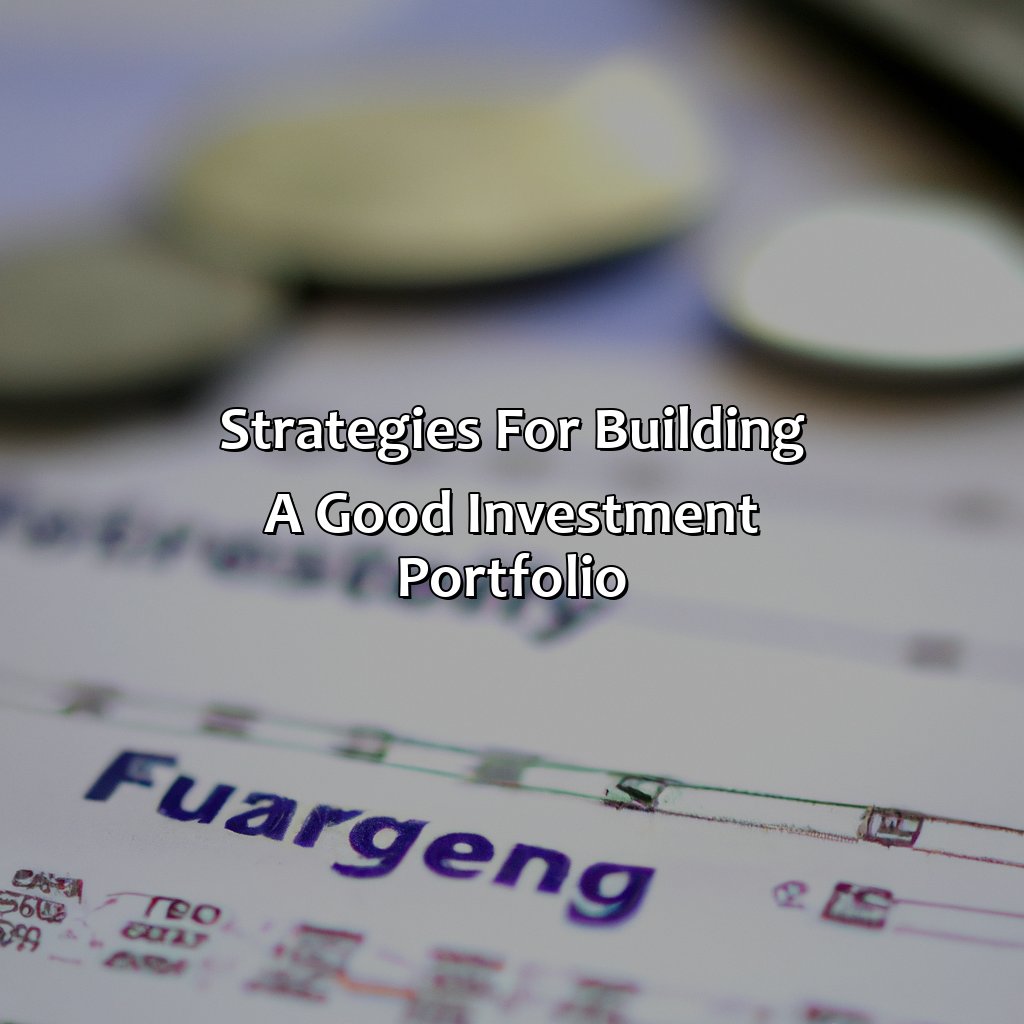
Image credits: retiregenz.com by Joel Arnold
Asset Allocation
Asset allocation is the process of dividing your investment portfolio into different types of assets based on your goals, risk tolerance and time horizon. This helps in managing risk by spreading investments across various asset classes like stocks, bonds, and cash equivalents.
Investors need to understand the importance of asset allocation as it helps in balancing out risks and returns. Allocating assets based on a well-defined strategy ensures that investors have a diversified portfolio that can withstand market fluctuations. It is also essential to periodically review and rebalance the asset allocation to maintain optimal diversification.
It’s important to note that Asset allocation is not a one-time strategy but rather an ongoing process that requires attention, monitoring and adjustments based on changing market trends. Sticking with high performing stocks, avoiding complex products, taking a long-term approach, keeping cash reserves for emergencies are some strategies for effective asset allocation.
Adopting the right approach to asset allocation can optimize returns while minimizing risks by providing exposure across multiple markets depending upon an investor’s preference for growth and stability. A balanced investment portfolio will help protect against potential losses in any one type of investment or sector while seeking overall diversification based on financial goals longitudinally.
Don’t put all your eggs in one basket, especially if that basket is shaped like a volatile stock market.
Diversification
Spreading investments across various industries, geographic locations, and asset classes is a crucial strategy to thwart risks. This can be achieved by deploying the tactic of portfolio diversification. Diversification ensures that one poor performing investment doesn’t cripple your entire portfolio.
To diversify the portfolio, invest in companies or assets with different characteristics, such as individual company stocks, mutual funds, exchange-traded funds (ETFs), bonds of varying maturities, real estate, and commodities. A well-diversified portfolio can minimize exposure to significant market volatility and lower-risk-adjusted performance.
While diversification minimizes overall risk exposure, it’s not necessary to allocate an equal amount of money to each investment type or sector – instead consider analyzing how different types of investments correlate with one another and spread money accordingly for optimal risk mitigation.
Jurisdictions that you decide to invest in plays a significant role in protecting against macroeconomic shifts worldwide. As seen from the 2008 financial catastrophe and its spread across the globe; spreading risk around different geographies will protect against fluctuations in currency values while hedging geopolitical risks.
Diversification strategies have been proven effective over time to reduce overall risk and maximize returns on investment when implemented correctly. For example, during the COVID-19 pandemic crisis as the equity markets plunged dramatically globally – diversified portfolios performed better than those who had chosen investing in just one industry or asset type like tech stocks – which saw vast losses at that catastrophic time period!
When it comes to rebalancing your portfolio, remember the words of a wise philosopher: “You can’t always get what you want, but if you try sometimes, you might just find you need to sell some stocks.”
Rebalancing
Maintaining a balanced investment portfolio is critical for long-term financial success. One way to do this is through rebalancing. Rebalancing involves selling and buying assets in order to maintain the balance of your portfolio.
Rebalancing should be done regularly, but not too often. A good rule of thumb is to rebalance your portfolio once a year or whenever one asset class deviates more than 5% from its target allocation. This allows you to keep your investments on track while minimizing costs and taxes.
It’s essential to consult with a financial advisor before making any significant changes to your investment strategy. They can help you determine when and how often to rebalance, as well as which assets are best suited for your goals.
Pro Tip: When rebalancing, consider buying low and selling high by investing in underperforming asset classes and reducing exposure to overperforming ones.
Remember, when it comes to risk management, it’s better to be safe than sorry, unless you’re a daredevil investor looking to live dangerously and potentially lose it all.
Risk Management
Managing the Uncertainties – Mitigating Risks in Your Investment Portfolio
To build a good investment portfolio, one must understand and manage risks effectively. Allocating assets across diverse sectors, maintaining liquidity, setting appropriate risk-reward ratios, and conducting thorough research before investing can minimize financial losses. Additionally, monitoring market signals and repositioning assets as necessary can help reduce volatility.
A crucial aspect of risk management is to ensure diversification prevents concentration risk that could lead to significant losses. It’s also essential to prioritize long-term investments over short-term gains by factoring in an investor’s goals, lifestyle requirements, and level of risk aversion.
Safeguarding your investment portfolio from undue vulnerabilities requires keeping up-to-date with market events and macroeconomic factors that could impact the investment performance adversely. By regularly evaluating portfolios in tune with changing economic and business scenarios, investors gain the requisite understanding needed to create an optimal investment strategy.
Do not let the fear of losing out prevent you from embracing unnecessary risks or missing out on opportunities that meet your financial objectives. Harnessing insights into optimum-risk levels can help steer a balanced path towards wealth creation while ensuring long-term stability in your portfolio.
Get ready to put the ‘invest’ in ‘investment’ with these savvy tips for building a killer portfolio.
Tips for Building a Good Investment Portfolio
Construct a great investment portfolio with hints to comprehend your objectives.
Investigate and get started early.
Work with a financial expert to maximize returns.
Conquer these tips for your financial targets.
These subsections give answers to the usual issues investors confront when building a triumphant portfolio.
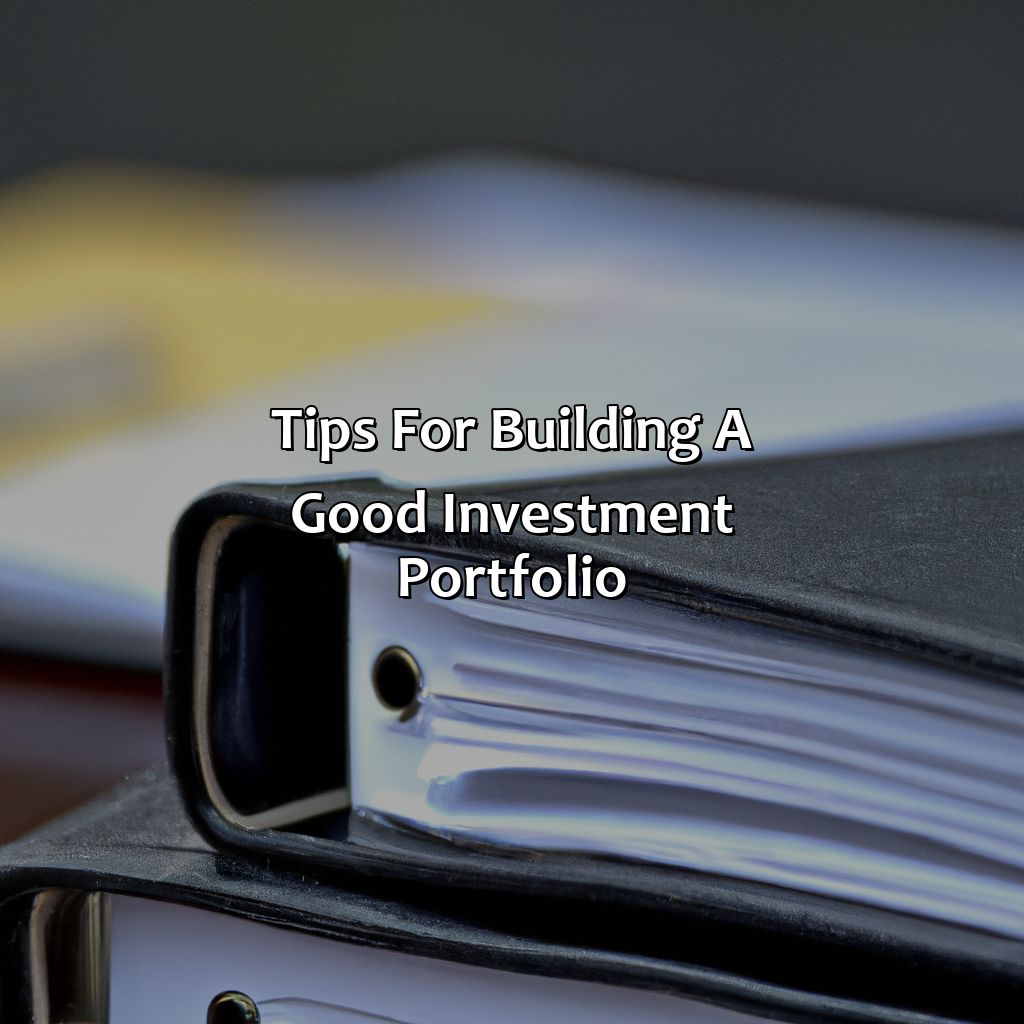
Image credits: retiregenz.com by James Jones
Understand Your Goals
When designing your investment portfolio, it is crucial to identify and comprehend your ultimate objectives. Understanding Your Long-term Goals can aid in determining the appropriate investments and asset allocation strategy. This entails assessing your financial position, determining how much you’ll require for long-term goals such as retirement or paying for a child’s education, and evaluating your risk tolerance. By comprehending these factors, you can start to create a personalized plan that matches your unique risk appetite and financial objectives.
In addition, when Considering Your Investment Objectives, it is critical to define both short- and long-term goals. These might include conserving wealth, developing income streams for retirement, or accumulating assets over time. Portfolio design must be proactive and flexible enough to adapt to evolving market situations while keeping these targets in mind.
It is necessary to consider both strategies’ Historical Performance while choosing an asset allocation approach that fits the investor’s particular objectives. Investors should evaluate the historical performance of various asset classes plausibly to weigh their pros and cons against their portfolio requirements.
Through utilizing research-based discoveries on investment effectiveness, investors may acquire a varied collection of assets aligned with their targets while reducing risk exposure through innovative techniques such as optimal portfolios structured from commodities or real estate fund holdings over other conventional stock-based portfolios.
Google is your friend, but your financial advisor is your best friend – unless they invested in Gamestop.
Do Your Research
To build a successful investment portfolio, it is crucial to conduct thorough research and gather relevant information on the stocks, funds or securities you intend to invest in. Researching the company’s financial reports, industry trends, and market news can help identify potential stocks or securities that will help diversify your portfolio.
Spend time analysing the potential risks and rewards of each investment to make informed decisions. Compare different assets within an asset class, and consider how they are expected to perform under different market conditions. Utilize resources like CNBC or Financial Times to stay updated on stock performances and market changes.
Knowing your risk tolerance is also important when choosing investments for your portfolio. Investing in volatile markets may be suitable for those with higher risk tolerance while conservative investors may prefer bonds or stable blue-chip stocks.
Lastly, expand your knowledge by joining investor communities and taking part in seminars conducted regularly. Remember that investing involves uncertainty, but adequate research can reduce risks associated with investing in various opportunities.
Start early or start regretting later, because compound interest doesn’t give a damn about your excuses.
Start Early
Beginning Early: The Key to a Strong Investment Portfolio
One essential tip for creating a powerful investment portfolio is initiating the process early. Jump-starting your investments sooner rather than later will provide greater opportunity for compound interest and minimize risk. Time is of the essence when it comes to building a diversified portfolio that has the ability to produce attractive returns, so starting early is crucial.
Taking advantage of Time and Compounding
Starting early with investments offers you the chance to take advantage of time and compound interest. The earlier you invest, the more time your funds have to accrue returns over an extended period. By allocating your money towards long-term investments in low-cost index funds or exchange-traded funds (ETFs), your portfolio will be steadily building wealth through compounding interest. Compounding allows for growth on both the principal amount invested initially and future returns generated by these investments.
Continuous Investments Bring Long-Term Gains
To ensure long-term investment gains, start contributing small sums continuously. Making regular contributions rather than sporadically throwing large amounts into stocks or other investments can help keep transactions fees low while continuing forward momentum for those long-term gains. By using this approach–called dollar-cost averaging–you can gain confidence in each financial decision made while also developing the habit of consistently investing and saving regularly over time.
Don’t miss Early Bird Bonuses!
The earlier you start preparing for your financial future, the higher chances you have of creating a strong investment portfolio that supports all the goals you hold dear as time passes on. Delaying your choice to invest due to ignorance or other factors may prove costly down the road as missed opportunities expire forever without leaving even a trace behind! Working with a financial advisor is like having a therapist, but instead of your emotions, they help you manage your money issues.
Work with a Financial Advisor
Collaborate with an Expert Financial Consultant to Build Your Investment Portfolio
Partnering with a skilled financial advisor is crucial for crafting an investment portfolio that meets your financial objectives. By working closely with someone who understands the market and can offer sound advice, you can create a customized plan aligned with your goals and risk tolerance. With valuable insights on asset allocation, diversification strategies, and performance analysis, your advisor will help optimize your investments for maximum returns.
Additionally, a reliable advisor will guide you on tax-efficient investment practices and keep you informed about market volatility or legislative developments that may impact your portfolio. Having an expert by your side also provides accountability and reduces the likelihood of making decisions based on emotions rather than sound evidence-based reasoning.
Don’t miss out on building a robust investment portfolio that yields long-term financial benefits – reach out to a professional financial advisor today!
Keep an eye on your portfolio like a hawk – unless you want to end up investing in the next Blockbuster.
Monitoring and Adjusting Your Investment Portfolio
Monitor your investments successfully! Regular check-ins and adjusting for changes are the key. Keep an eye on your portfolio. We’ll show you how to do it. Do regular check-ins and update your portfolio for any new changes.
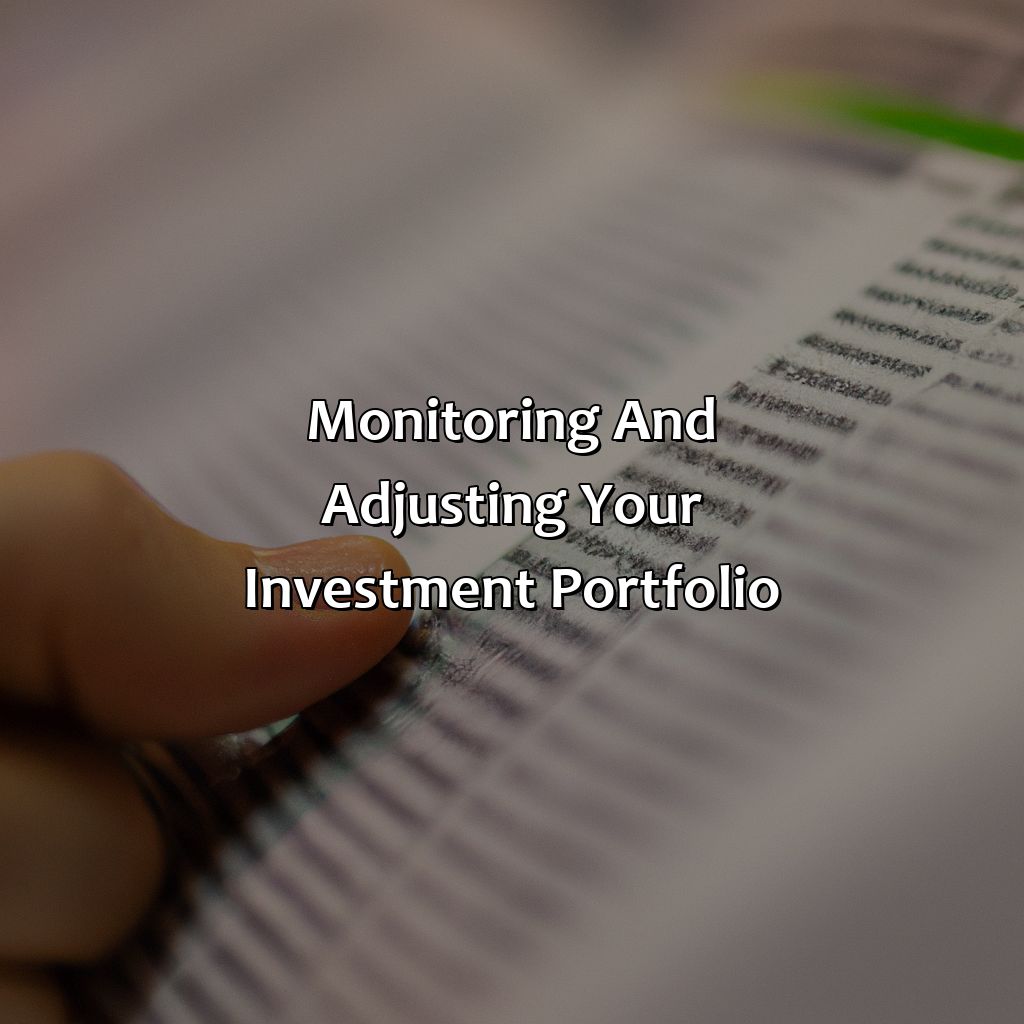
Image credits: retiregenz.com by James Washington
Regular Check-ins
Regular Portfolio Review: It is vital to keep track of your investment portfolio regularly, especially in the volatile market conditions. Analyzing and updating your assets can help identify potential risks and assess performance within the long-term investment goals.
Continued Vigilance: A wise investor adapts to the evolving market by recognizing strategies that are effective and those that require modifications. Regular monitoring of every asset class and making informed decisions based on their performance should be a priority.
Measure Against Goals: Rebalancing could be necessary to ensure that investments align with specific objectives, as circumstances may change over time. Carefully evaluating the portfolio against targets helps recognize when actions need to be taken.
Be On Top Of Your Game: Missing out on investing opportunities or making decisions hastily could significantly impact financial gains or losses. To mitigate risk exposure, consult an investment advisor, update personal knowledge through relevant resources, and proactively manage your portfolio allocations.
Even your investment portfolio needs a little makeover every now and then, just like that ex of yours who suddenly got hot.
Adjusting for Changes
When the market changes, your portfolio must change accordingly. Being prepared and ready to make the necessary adjustments to your investments is crucial for success. Adjusting the investment portfolio helps optimize and maintain a balance between risk and performance.
Adjusting your portfolio involves examining individual securities and their contribution to overall risk in the context of market trends. One approach is to rebalance your assets, which involves selling some investments that have increased in value while buying others that have depreciated to restore the original target allocation.
It is important not to overreact or make changes based on short-term developments or market volatility. A well-constructed financial plan with professional advice can help you avoid emotional reactions and stay focused on long-term goals.
In 2008, many investors panicked when the stock market crashed, leading to significant losses in their portfolios. Those who remained calm and made strategic changes saw better long-term results than those who reacted emotionally. Adjustments to a portfolio should be carefully thought out with proper analysis conducted by experts.
Five Facts About How To Build a Good Investment Portfolio:
- ✅ Diversification is key to building a good investment portfolio, spreading risk across multiple asset classes and sectors. (Source: Investopedia)
- ✅ Asset allocation determines the percentage of the portfolio allocated to different types of assets, such as stocks, bonds, and cash. (Source: The Balance)
- ✅ Regular portfolio review and rebalancing can help ensure that the portfolio remains aligned with investment goals and risk tolerance. (Source: Vanguard)
- ✅ Investment fees and expenses can eat away at returns over time, so it’s essential to choose low-cost investment options such as index funds and ETFs. (Source: Forbes)
- ✅ Patience and discipline are crucial to successful investing, as short-term market fluctuations can disrupt even the most well-structured investment plans. (Source: Charles Schwab)
FAQs about How To Build A Good Investment Portfolio?
What is a good investment portfolio?
A good investment portfolio is a diversified mix of assets that are tailored to an individual’s financial goals and risk tolerance. It is important to include a variety of investments such as stocks, bonds, and real estate to minimize risk and maximize returns over the long term.
How do I determine my risk tolerance?
Your risk tolerance is the degree of uncertainty you are willing to accept in pursuit of your investment goals. Factors such as your age, income, and investment experience play a role in determining your risk tolerance. An investment advisor can help you determine an appropriate level of risk for your portfolio.
How can I diversify my portfolio?
There are several ways to diversify a portfolio, including investing in different asset classes such as stocks, bonds, and real estate. Additionally, diversifying geographically by investing in companies and properties around the world can further reduce risk. Investing in different sectors, such as technology, healthcare, and consumer goods, can also help diversify a portfolio.
What is the ideal asset allocation?
There is no one-size-fits-all answer to this as it depends on an individual’s financial situation, risk tolerance, and investment goals. However, a common rule of thumb is the “100 minus your age” guideline which suggests that the percentage of stocks in a portfolio should equal 100 minus the investor’s age. The remaining percentage should be allocated to bonds and cash.
How often should I review and rebalance my portfolio?
It is recommended to review and rebalance your portfolio at least once a year. This ensures that your portfolio remains aligned with your investment goals and risk tolerance. Additionally, you should consider rebalancing after significant market movements or life events such as a change in income or family size.
What should I do if my portfolio is not performing as expected?
If a portfolio is not performing as expected, it is important to stay patient and avoid making impulsive decisions. Review your investment strategy and consider making adjustments to your portfolio allocation or investment selection. It may also be advisable to seek guidance from a financial advisor.
